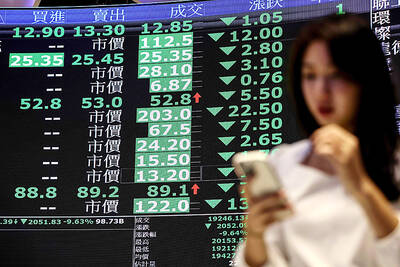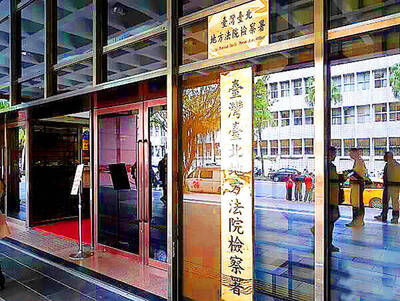A Chinese aerospace manufacturer on the weekend released high-resolution images of what could be China’s second stealth fighter.
For months, Shenyang Aircraft Corp (SAC), one of China’s principal aerospace firms, has been rumored to be working on the prototype of a stealth aircraft known as the J-21 “Snowy Owl.” This first came to the attention of defense analysts after a video surfaced in late June showing an aircraft fuselage covered in camouflage tarp being transported on a highway from SAC to a People’s Liberation Army Air Force (PLAAF) test center at Xian-Yanliang Airbase in Shaanxi Province, Defense News reported at the time.
Although experts cautioned that the video and images in June could have been part of a disinformation campaign, the crisp images of the dark-gray prototype serial “001,” posted on China Defense Blog on Saturday, appeared to provide confirmation that rival Chengdu Aircraft Industry Corp, which unveiled its J-20 less than two years ago, was no longer the sole player in China’s efforts to develop stealth aircraft. To date, two J-20 models have emerged and it is believed that the aircraft, which has encountered various delays mainly due to China’s engine technology “bottleneck,” will not be deployed before 2017 to 2019.
So far, there has been no confirmation that the covered fuselage seen in June and the prototype that emerged at the weekend are the same aircraft.
Defense experts remain divided on whether the J-20 and J-21, which outwardly have a similar appearance, with two engines, two tails and radar-evading design, would serve similar functions. However, preliminary image comparisons indicate that the J-21 is smaller than the J-20.
Some military analysts say that the PLAAF has been seeking more than one type of stealth aircraft, including a strike fighter and another serving as an air superiority fighter.
There has also been speculation that the J-21, which is sometimes referred to as the J-31, could serve as a carrier-based stealth complement to the non-stealthy J-15 “Flying Shark,” or as an export model, known as the F-60, to compete against Lockheed Martin Corp’s F-35.
Writing in Wired yesterday, defense analyst David Axe said that the emergence of the new prototype did not immediately imply that both the J-20 and J-21 will go through the development, testing and full-scale production phases. The US Air Force stealth program, he wrote, gave rise to no less than four stealth fighter prototypes in the 1980s, of which only two — the F-22 and F-35 — were eventually adopted, following billions of dollars of investment.
It is not unusual for China to play one defense program against another as a means to increase competition and encourage innovation. Despite the huge costs involved, a now richer Chinese military could also be more inclined to fund two or more stealth programs if the aircraft are intended to serve different purposes.

Intelligence agents have recorded 510,000 instances of “controversial information” being spread online by the Chinese Communist Party (CCP) so far this year, the National Security Bureau (NSB) said in a report yesterday, as it warned of artificial intelligence (AI) being employed to generate destabilizing misinformation. The bureau submitted a written report to the Legislative Yuan in preparation for National Security Bureau Director-General Tsai Ming-yen’s (蔡明彥) appearance before the Foreign Affairs and National Defense Committee today. The CCP has been using cognitive warfare to divide Taiwanese society by commenting on controversial issues such as Taiwan Semiconductor Manufacturing Co’s (TSMC, 台積電) investments in the

HELPING HAND: The steering committee of the National Stabilization Fund is expected to hold a meeting to discuss how and when to utilize the fund to help buffer the sell-off The TAIEX plunged 2,065.87 points, or 9.7 percent, to close at 19,232.35 yesterday, the highest single-day percentage loss on record, as investors braced for US President Donald Trump’s tariffs after an extended holiday weekend. Amid the pessimistic atmosphere, 945 listed companies led by large-cap stocks — including Taiwan Semiconductor Manufacturing Co (TSMC, 台積電), Hon Hai Precision Industry Co (鴻海精密) and Largan Precision Co (大立光) — fell by the daily maximum of 10 percent at the close, Taiwan Stock Exchange data showed. The number of listed companies ending limit-down set a new record, the exchange said. The TAIEX plunged by daily maxiumu in just

INVESTIGATION: The case is the latest instance of a DPP figure being implicated in an espionage network accused of allegedly leaking information to Chinese intelligence Democratic Progressive Party (DPP) member Ho Jen-chieh (何仁傑) was detained and held incommunicado yesterday on suspicion of spying for China during his tenure as assistant to then-minister of foreign affairs Joseph Wu (吳釗燮). The Taipei District Prosecutors’ Office said Ho was implicated during its investigation into alleged spying activities by former Presidential Office consultant Wu Shang-yu (吳尚雨). Prosecutors said there is reason to believe Ho breached the National Security Act (國家安全法) by leaking classified Ministry of Foreign Affairs information to Chinese intelligence. Following interrogation, prosecutors petitioned the Taipei District Court to detain Ho, citing concerns over potential collusion or tampering of evidence. The

‘COMPREHENSIVE PLAN’: Lin Chia-lung said that the government was ready to talk about a variety of issues, including investment in and purchases from the US The National Stabilization Fund (NSF) yesterday announced that it would step in to staunch stock market losses for the ninth time in the nation’s history. An NSF board meeting, originally scheduled for Monday next week, was moved to yesterday after stocks plummeted in the wake of US President Donald Trump’s announcement of 32 percent tariffs on Taiwan on Wednesday last week. Board members voted to support the stock market with the NT$500 billion (US$15.15 billion) fund, with injections of funds to begin as soon as today. The NSF in 2000 injected NT$120 billion to stabilize stocks, the most ever. The lowest amount it